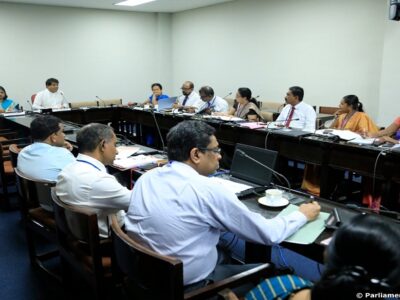(COLOMBO, LANKAPUVATH) –While in 2017, Foreign Direct Investment (FDI) into Sri Lanka grew to over $1.710 billion including foreign loans received by companies registered with the BOI, more than doubling from the $801 million achieved the previous year, Sri Lanka still has ways to go to attract more FDI, according to the World Bank.
Dr. Tatiana Nenova, World Bank Program Leader for Sri Lanka and Maldives in a blog exploring different aspects of FDI in Sri Lanka says as a percentage of GDP, Sri Lanka’s FDI currently stands at a mere 2 percent and lags behind Malaysia at 3 – 4 percent and Vietnam at 5 – 6 percent.
The author points out that FDI into Sri Lanka has been skewed away from high value-added global production networks and the larger share of FDI inflows have been focused on infrastructure which may boost temporary growth in construction but not make a long term impact.
“On the other hand, manufacturing and services hold a better promise for the long run, but even there, a significant share of FDI is related to traditional sectors and local market-oriented activities with low value-added, where productivity gains are small,” she says.
The World Bank Program Leader points out that to keep and increase FDI flows, Sri Lanka will need to make concerted and ambitious efforts to address gaps and play to its strengths.
“Simply put, Sri Lanka can improve FDI by creating a more hospitable environment for investments. Taking steps in this direction is essential for domestic investment as well, not only FDI. And while the government has already begun targeting problem areas, much more is needed,” Dr. Nenova says suggesting following six ways to improve FDI.
1. Reworking trade policy
Reforms in Sri Lanka’s trade policy saw eliminations or reductions of some 1200 para-tariff lines in late 2017, and further liberalization is expected with the budget in 2018 and beyond to boost trade. More trade will help diversify the economy and exports and lift a burden off of the public sector to drive growth. It can also actively promote technology absorption, skill upgrading, and increased competitiveness; workers, consumers, producers and the state will benefit in the long-run as a result.
2. Improving logistics and trade facilitation
Sri Lanka can leverage its unique location and trade agreements to overcome the dis-economies of its small scale. The Colombo port, which already sees 80 percent of its volume coming from trans-shipment cargo, is poised to grow. However, Sri Lanka cannot take its position for granted with high growth in other ports in Pakistan and India. Another way to compete is on speed and cost of trade processing.
To go the extra mile to a regional logistics hub, the government has started reforms including establishing a Trade Information Portal and the National Single Window which will streamline trade processing across the 20 plus agencies involved.
3. Promoting investments and enabling regulations while avoiding policy uncertainty
The island was ranked 111th out of 190 economies in the Ease of Doing Business index 2018 which shows opportunity for improvement. The Government has carried out some focused reforms since 2016 to improve the investment climate.
Reforms are needed to address critical challenges in areas like land ownership and policy uncertainty that is discouraging investor. Long-term policy strategies can serve as path-setters and expressed commitment to policy continuity in support of the government’s vision.
Sri Lanka’s main FDI facilitation body the Board of Investment (BOI) is transitioning towards modern investment promotion. Internal Revenue Act streamlined and improved the efficiency and transparency of incentives applicable to foreign investments in Sri Lanka. The government is also liberalizing the foreign exchange controls.
4. Boosting innovation by way of competitive product and financial markets
Sri Lanka has seen little transformation in what it exports over the last 20 years. There’s been limited innovation and diversification even into “nearby product” space (new products closely related to existing ones) which is an easier step that happens organically with investment. This difficulty moving into new space has also left the country out of step with regional and global production networks. Where innovation exists, it is limited to a handful of industries. A national innovation strategy seeks to address gaps and support start-ups and SMEs.
Financial products have also remained behind the firm needs – e.g., SMEs need factoring and leasing, supplier finance mechanisms and export-related financial instruments.
5. Addressing labor-related issues and getting women to work
Efforts are also needed to expand the pool of labor, relax constraints in labor laws such as lengthy and costly termination procedure, and equip Sri Lankans with skills in demand in the marketplace. In particular, Sri Lanka can benefit tremendously from boosting its female labor force participation rate by addressing issues such as a lack of quality childcare, skills mismatch, unsafe transport and poor working conditions that keep women away from the labor force.
Sri Lanka could also ease the access of local companies to foreign expertise through introducing simpler visa procedures, which are currently complicated and burdensome for foreign employees in Sri Lanka, limiting FDI especially for smaller ventures such as in tourism.
6. Providing enabling logistics and the right infrastructure environment
Nationally, Sri Lanka needs to address transportation shortfalls, which have seen inequitable development with some regions disconnected from growth, increasing issues of congestion, and inadequate safety for women. Different areas face different transportation gaps in roads, air travel, and marine transportation infrastructure while rail infrastructure is outdated and limited, especially for the transport of goods.
Read the full article here.
This blog series by the World Bank explores different aspects of FDI in Sri Lanka. Part 1 put forth 5 Reasons Why Sri Lanka Needs FDI. This blog by Tatiana Nenova is the part 2 of the series. Part 3 will relate how the World Bank is helping to improve Sri Lanka’s enabling environment for FDI.




